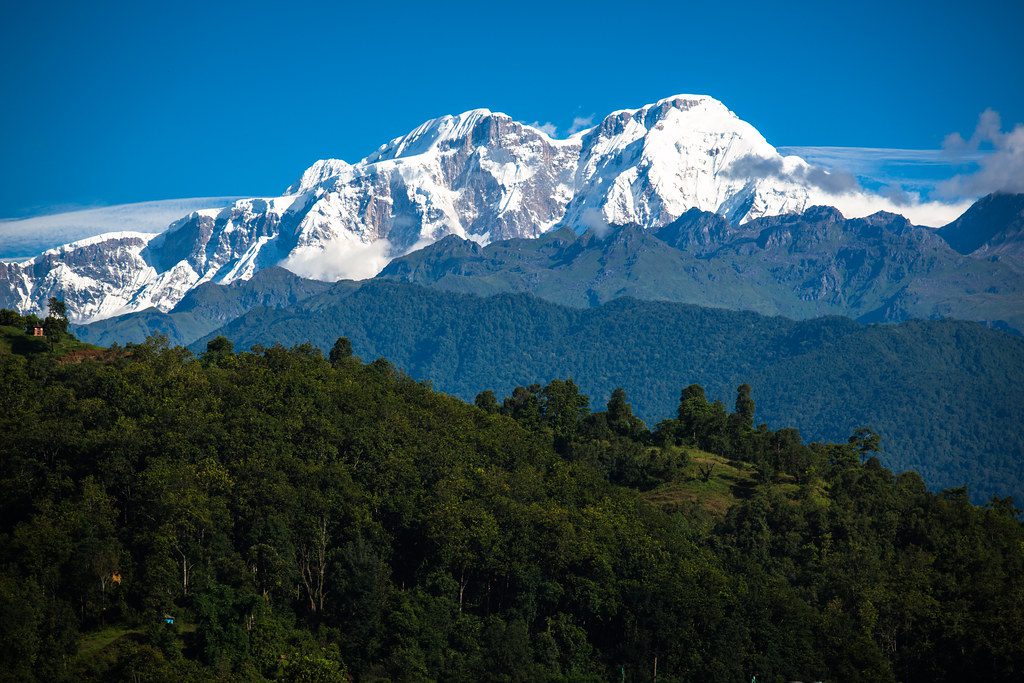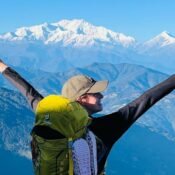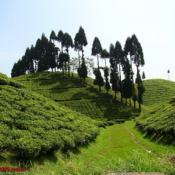
Explore the Hidden Gems of the Eastern Himalayas – Sandakphu, Maneybhanjyang, and Beyond
The Eastern Himalayas are among the most breathtakingly beautiful areas on Earth. The Eastern Himalayan sub-region, which stretches for about 2,500 km across Bhutan, China, India, and Nepal, is home to the highest peaks in the world, including Mount Everest, as well as the greatest concentration of glaciers outside of the polar caps.
Sandakphu and Maneybhanjyang, situated across in the Eastern Himalayas’ take on, a haven from the well-traveled trails of well-known hill stations. These less well-known locations allure with their amazing views, rich wildlife, and spirit of adventure. There are many of undiscovered treasures in the Eastern Himalayas beyond Sandakphu and Maneybhanjyang. Join us as we explore these fascinating locations, each with a distinct charm and tale to tell!
1 – The Rooftop of West Bengal – Sandakphu
Sandakphu, standing tall at 3,636 meters, is the highest peak in West Bengal. This vantage point offers a panoramic view of the world’s highest peaks, including the majestic Kanchenjunga, Everest, Lhotse, and Makalu. Known as the “Trekker’s Wonderland,” Sandakphu’s trails are adorned with vibrant rhododendrons, magnolias, and orchids, making it a botanical paradise.
The journey to Sandakphu begins at Maneybhanjyang, a small town that serves as the gateway to this adventure. The trek is challenging yet rewarding, with trails meandering through dense forests, quaint villages, and alpine meadows. As trekkers ascend, they are greeted by the ever-changing landscapes and a sense of tranquility that only the mountains can offer.
One of the highlights of trekking to Sandakphu is the opportunity to experience the local culture. The villages along the way, such as Tumling, Gairibas, and Kalapokhri, offer homestays where trekkers can enjoy traditional hospitality. These interactions provide a glimpse into the lifestyle of the local communities, adding depth to the trekking experience.

2 – The Gateway to Adventure – Maneybhanjyang
Maneybhanjyang, situated at an altitude of 1,980 meters, is a quaint town that serves as the starting point for the Sandakphu trek. The town itself is steeped in history and culture, with a significant population of Sherpas who have made this place their home. The blend of Nepali and Indian influences is evident in the town’s architecture, cuisine, and festivals.
For those who prefer a less strenuous journey, Maneybhanjyang offers a unique Land Rover safari to Sandakphu. The vintage Land Rovers, remnants of the British era, navigate the steep and rugged terrain, providing an adventurous alternative to trekking. This ride, though bumpy, is a thrilling way to experience the beauty of the region.
Beyond Sandakphu and Maneybhanjyang The Other Hidden Gems
While Sandakphu and Maneybhanjyang are the highlights of the region, the Eastern Himalayas are dotted with numerous other hidden gems. Here are some lesser-known destinations that are worth exploring:
| Phalut: | Located at an altitude of 3,600 meters, Phalut is another high point that offers stunning views of the Himalayas. The trek from Sandakphu to Phalut is a continuation of the adventure, passing through forests of silver fir and bamboo. Phalut is known for its solitude and the ethereal beauty of its landscapes, making it a perfect retreat for those seeking peace and introspection. |
| Singalila National Park | The Sandakphu-Phalut trek passes through Singalila National Park, a haven for nature enthusiasts. The park is home to a rich variety of flora and fauna, including the elusive red panda, Himalayan black bear, and numerous bird species. Wildlife enthusiasts can embark on guided tours to explore the park’s biodiversity, making it a must-visit for those passionate about nature. |
| Srikhola | Nestled along the banks of the Srikhola River, this picturesque village offers a serene escape from the hustle and bustle of city life. Srikhola is the perfect place to relax after a long trek, with charming cottages and riverside campsites providing comfortable accommodation. The gentle sound of the flowing river and the lush greenery create an idyllic setting for unwinding and reconnecting with nature. |
| Rimbik | Rimbik, a small town near the border of Nepal, is another hidden gem worth exploring. It serves as an alternative endpoint for the Sandakphu trek, offering trekkers a different perspective of the region. Rimbik is surrounded by dense forests and pristine rivers, making it a great base for hiking, bird-watching, and experiencing rural life. |
| Dhotrey | Dhotrey, a quaint village located within Singalila National Park, is a haven for photographers. The village offers stunning views of Kanchenjunga and the surrounding peaks, especially at sunrise and sunset. The terraced fields, traditional houses, and vibrant gardens add to the village’s charm, making it a perfect spot for capturing the beauty of the Eastern Himalayas. |
| Meghma | Meghma, which means “place of clouds” in Nepali, lives up to its name with its mist-covered landscapes. This small hamlet is located on the trekking route to Sandakphu and offers a mystical experience with its foggy ambiance and panoramic views. Meghma is also known for its Buddhist monastery, which adds a spiritual dimension to the visit. |
Practical Tips for Exploring the Eastern Himalayas
The best time to explore Sandakphu, Maneybhanjyang, and the surrounding areas is during the spring (March to May) and autumn (September to November) months. These seasons offer clear skies, pleasant weather, and vibrant flora. Winter trekking is also possible but requires preparation for the cold and snow-covered trails.
When trekking in the Eastern Himalayas, it’s very important to pack wisely. Essentials include sturdy trekking shoes, warm clothing, a good-quality sleeping bag, and a reliable backpack. Don’t forget to carry a first-aid kit, water purification tablets, and high-energy snacks. A camera is a must to capture the breathtaking landscapes.
Trekkers need permits to enter Singalila National Park, which can be obtained at Maneybhanjyang. Hiring a local guide is recommended, especially for those unfamiliar with the terrain. Guides not only ensure safety but also enrich the trekking experience with their knowledge of the region’s history, culture, and biodiversity.
Conclusion: The Unseen Beauty of the Eastern Himalayas
The Eastern Himalayas, with Sandakphu and Maneybhanjyang as its crown jewels, offer a unique blend of adventure, natural beauty, and cultural richness. These hidden gems provide a refreshing alternative to the crowded tourist destinations, allowing travelers to immerse themselves in the pristine wilderness and authentic local experiences.
As you plan your journey to this enchanting region, remember that the true essence of travel lies in exploration and discovery. Beyond the well-known trails and viewpoints, the Eastern Himalayas hold countless secrets waiting to be unveiled. So, lace up your trekking boots, pack your bags, and embark on an unforgettable adventure into the heart of the Himalayas.
For experienced hikers, nature lovers, or anybody looking for a peaceful getaway, the Eastern Himalayas offer an experience that will stay with you long after you’ve returned to the plains. Explore Sandakphu’s hidden treasures, as well as Maneybhanjyang and surrounding areas, and allow the allure of the mountains to revitalize your spirit.
Frequently Asked Questions – FAQs
What is the best time to visit Sandakphu and Maneybhanjyang?
The best time to visit is during spring (March to May) and autumn (September to November) for clear skies and pleasant weather.
Are permits required to enter Singalila National Park?
Yes, permits are required and can be obtained at Maneybhanjyang.
Can I trek from Sandakphu to Phalut?
Yes, the Sandakphu-Phalut trek offers stunning views and is a popular route for trekkers.
What should I pack for trekking in the Eastern Himalayas?
Essentials include sturdy trekking shoes, warm clothing, a sleeping bag, first-aid kit, and high-energy snacks.
Are homestays available along the trekking routes?
Yes, villages like Tumling, Gairibas, and Kalapokhri offer homestays, providing a chance to experience local culture.
Is Land Rover safari available as an alternative to trekking?
Yes, vintage Land Rover safaris from Maneybhanjyang to Sandakphu offer an adventurous way to experience the region.
What is the altitude of Sandakphu?
Sandakphu stands at an altitude of 3,636 meters, offering panoramic views of the Himalayas.
All Categories
Recent Posts
Tags




